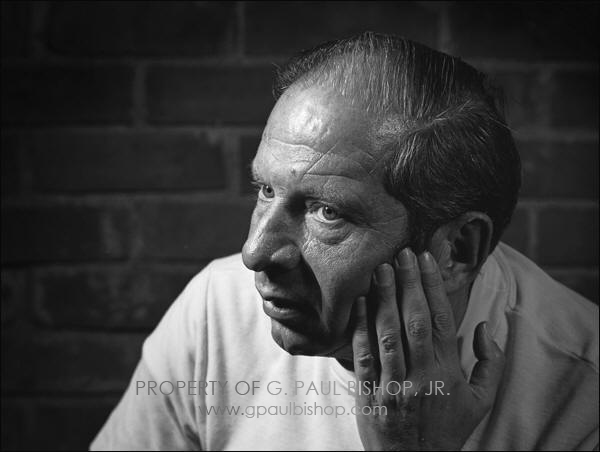|
|

"Sam Bourne"
Photographed by g. Paul Bishop, '71
No. 2
©2019 G. Paul Bishop, Jr.
- IMAGE NO
LONGER AVAILABLE -
Sam Bourne
(Dr. Samuel G. Bourne)
Research Mathematician
-----
FOUR
CONVERSATIONS WITH AND ABOUT
ALBERT EINSTEIN
By Samuel Bourne,
Ph.D.
Department of Mathematics,
University of California
Berkeley, CA 94720, USA
2, September 1953
Professor
Einstein, during his 25 year stay at the Institute, sought a
mathematical theory that would unify the electro-magnetic field
and the gravitational field, usually referred to as unified
theory. In his original paper on General Relativity published in
1915, he postulated their separate existence. He was able to
explain the 43" advance of the path of the planet Mercury in its
100 year travel around the Sun, predict the bending of light and
the red shift of the spectrum of sodium in the Sun due to its
gravitational pull. The bending of light was verified in the now
famous complete solar eclipse in the Argentine in 1919 and also
made Einstein world famous at the age of 40.
During my stay at
the Institute, Dr. Einstein and I had many discussions related
to unified field theory for its conception appealed to my
mathematically abstract mind. During the Summer of 1953, I
attended the first Summer Institute sponsored by the National
Science Foundation, on Jordan Algebras at Colby College,
Waterville, Maine. The site of the Institute was favored by
Marston Morse, the Mathematicians' representative of the
National Science Foundation for he was Colby College's most
famous graduate. I wrote a letter to Albert Einstein concerning
his mathematical representation of unified theory. His notation
dated back to the first decade of this century and I suggested
that he try using the notation of permutations. On my return to
Princeton, I called on him at his office in room 115 and he
mentioned my letter. I told him that "his notation was
old-fashioned and should be made more abstract." (The notation
he was using was introduced by Ricci and Levi-Cevita, Italian
geometers whose life span covered the late part of the 19th and
early part of the 20th centuries, and whose work, Einstein used
in his General Relativity of 1915). He replied, "But I do not
know abstract mathematics. Why do you not teach me abstract
mathematics?" I was taken aback and gathering my thoughts, I
said to myself, "God, who teaches Albert Einstein?" After
regaining my composure, I said, "I shall send you some of my
papers and we shall discuss them." The fact that he was willing
to be taught by me impressed me deeply. Here sat before me a
Great Mind who exemplified the saying that "the true quality of
greatness is humility."
__________
Bourne,
Samual, Ph.D., from the papers: "Four Conversation with
Albert
Einstein." 1953.
-----
--- All material is copyright protected ---
|
